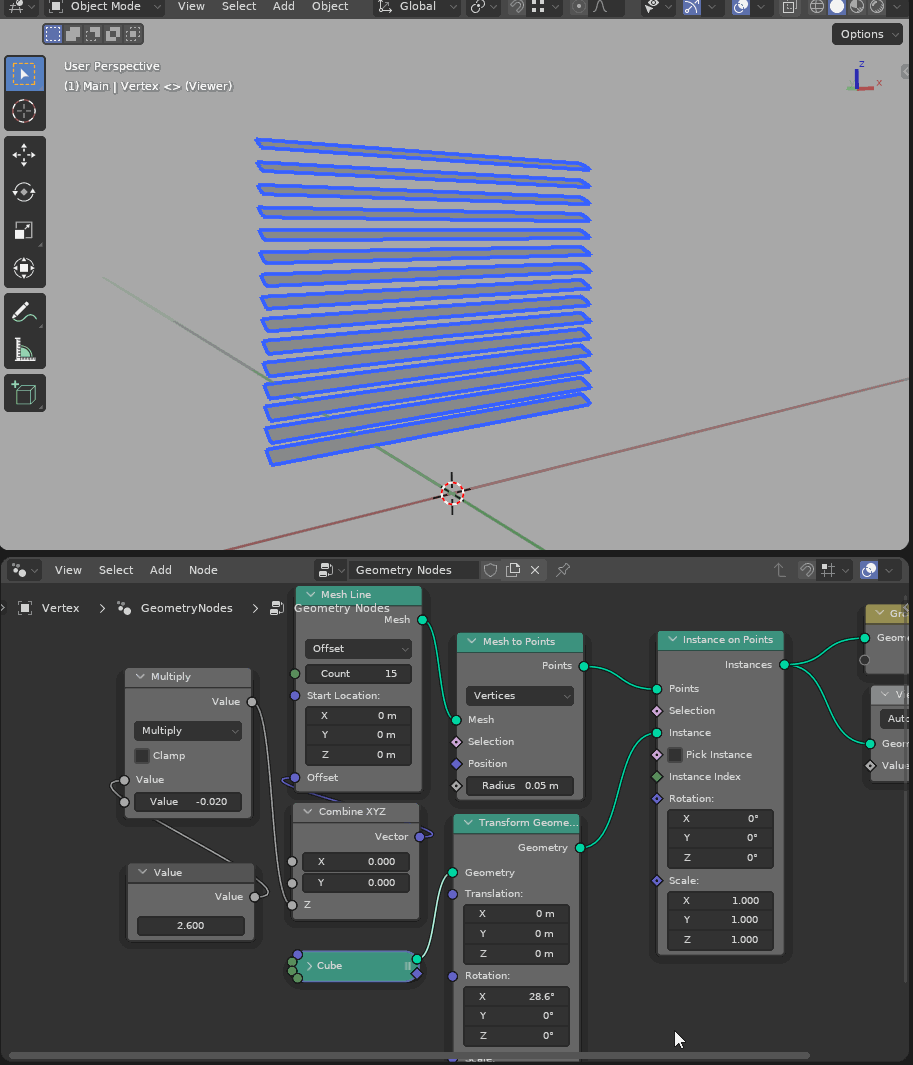I am learning Geometry Nodes by creating procedural windows blinds. Thanks to the answers on my previous question I have solved some problems but now I want to get further.
I want create a number of slat composing windows blinds (done). I want to be able to rotate each slat through single input parameter (done).
Now I want to be able to animate those blinds in the way that slats will go top and down, stacking each other accordingly. I cannot find any suitable method for that as currently I am creating instances on points based on curve line. I was thinking about 2 ways:
- Using some rigging and making each lower slat a floor for the upper one. This way moving the last slat I shall be able to move all on top of it. But I don't know if it is possible to make such thing in a procedural way on each instance.
- Using some Python scripting and maybe avoid creating instances based on mesh line. But on the other hand I would like to use Geometry Nodes. Is it possible to mix Python scripting with Geometry Nodes?
Thanks



